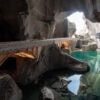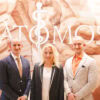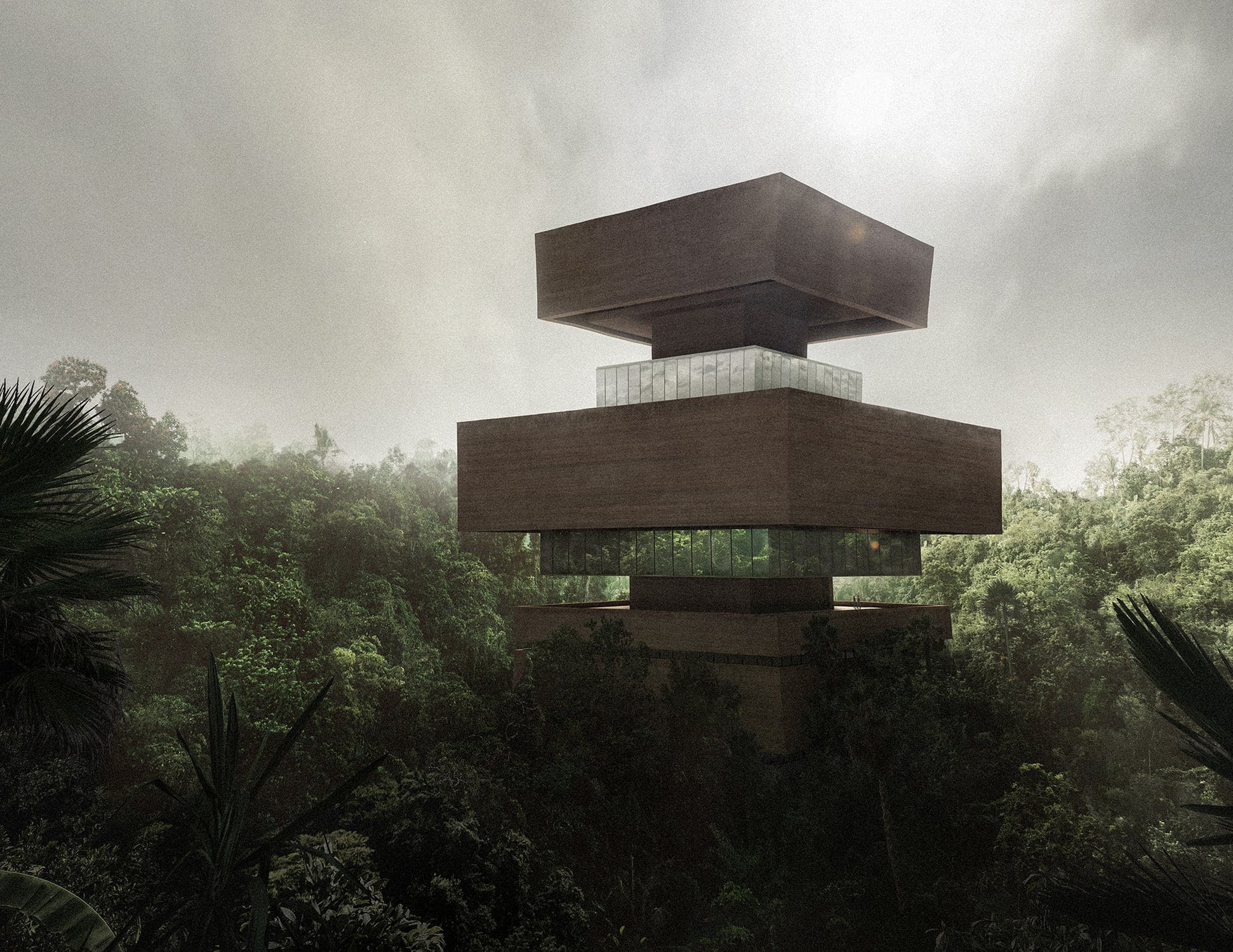Mexican art collector Fernanda Raíz plans Xinatli Research Museum of Man, Art and Science, which explores the possibility of harmonious coexistence in the 21st century.
The German studio Viktor Sørless and the Mexican Estudio Juiñi were entrusted with the first architectural designs of the museum.
The name of the research museum, Xinatli, is based on the term Xinachtli of the Nahua language and describes the moment of germination of a seed, when it rises in life-giving form. The term symbolizes creation and honors the possibility of metamorphosis.

Climate change in spirit and sensation
The Xinatli design by Studio Viktor Sørless and Estudio Juiñi envisions the construction of a re-arranged step pyramid on the border of the tropical rainforest in southern Mexico, with several exhibition spaces. Several art pavilions are also planned for the 80-hectare site, as well as a scientist-run terrestrial institute.
The site selected was cleared forest land that was previously affected by illegal logging and will be reforested in the coming years. Legally, it is stipulated that the land will be returned to nature as a legal entity, represented by environmental representatives and local communities. They will be the sole custodians of the area after one generation.
Behind Xinatli is the conscious decision to help shape a climate change that today seems more necessary than ever in spirit and sensation: Art and its aesthetic perception, an ecologically oriented way of building with clay and a cultural engagement with all living things should help to preserve the continuity of life on earth.

Xinatli’s founder, Mexican art collector Fernanda Raíz, explains the venture as follows:
“Until now, museums have mainly exhibited power and property. A new museum should not be another showcase for that, but a place that advocates for more justice: in ecology, in art, and in the social.”
More understanding of interwoven life
It is planned that Xinatli will be dedicated to life and its interconnectedness, the human as well as more-than-human. In addition to promoting artistic creative processes, the research museum focuses, among other things, on circular ways of thinking, the philosophical consideration of plants and fungi, and the global examination of nature as a legal subject, as provided for in the constitutions of Bolivia and Ecuador.
At its core is the development of an earth-centered ecology that seeks to dissolve the dualisms between culture and nature and fruitfully explore the field of relationships between humans, animals, and plants.
“Behind Xinatli is the idea of developing a sensual and compassionate relationship with the world and leaving hierarchical thinking behind.”
explains Fernanda Raíz
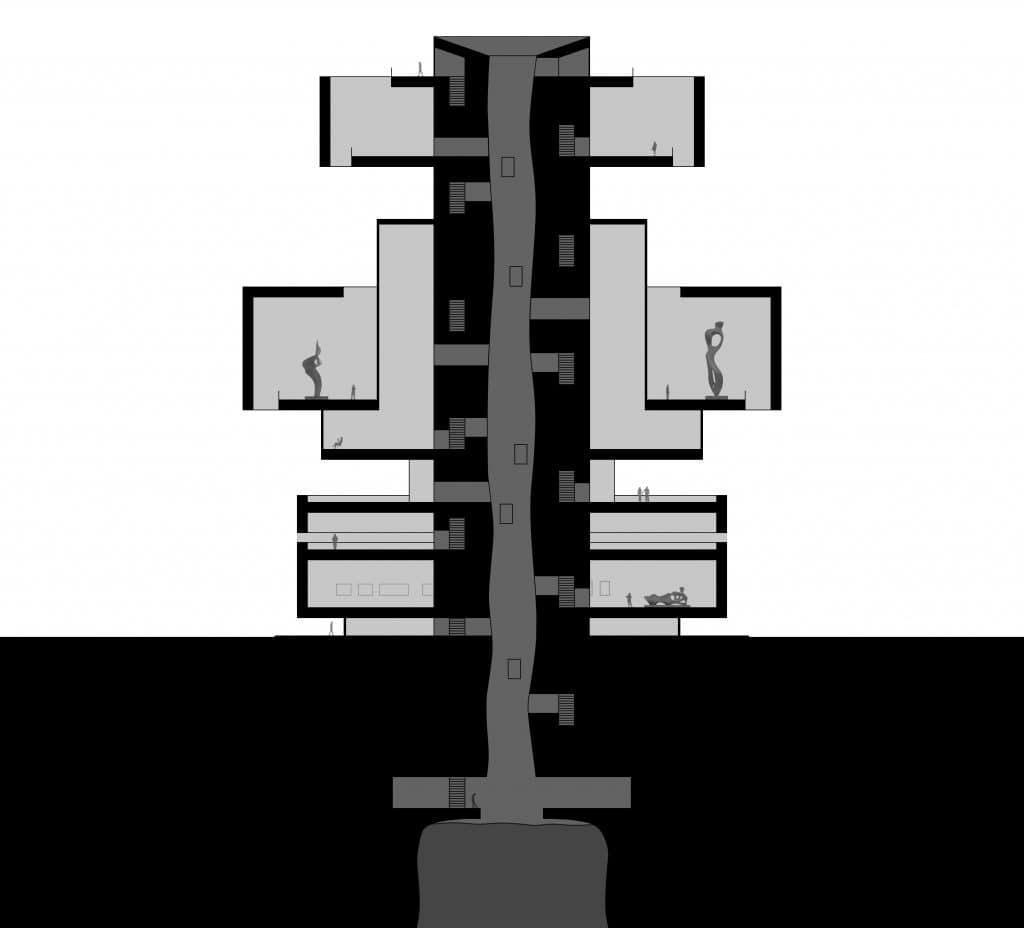
Building with earth – not against it
Xinatli’s first building was designed by German studio Viktor Sørless and Mexican Estudio Juiñi, both of whom have worked for years as specialists in the field of earthen construction. Their design, a rearranged stepped pyramid, is to be built of clay. Wood will be used for load-bearing elements. The material properties of the clay are to be refined through the knowledge of local craftsmen. For example, chukum resin and sisal fibers will increase the weather resistance and tensile strength of the building in order to cope with the climatic conditions near the rainforest.
“For me, clay offers unbeatable advantages. We’ve been using the natural building material since we settled down as humans; it’s at everyone’s feet, under the ground, as humus, basically as the binder of a humane building method. Clay is recyclable into natural cycles and ecologically sound.”
says Viktor Sørless
The architectural design envisages a redesign of the step pyramid. The step pyramid is as a component of Mesoamerican culture – and at the same time serves in many parts of the world as a symbol of the class society of rich and poor. The path to a new society, wrote Mexican writer Octavio Paz in “Labyrinth of Solitude,” leads through a critique of the pyramid, the pyramid society. In their design for the symbolic dissolution of hierarchy in our societies, the architects raise the widest base layer to the center and thus at the same time to the height of growth of the largest trees, thus symbolically at eye level with nature.
The design process will be iterative and will involve several steps of coordination with the public to arrive at a final form.
“In the end, the main thing is to use a building material, the imagination and the involvement of people.”
sys Fernanda Raíz
About Studio Viktor Sørless
Studio Viktor Sørless was founded in Hamburg in 2016. The aim of the studio is to contribute to a breakthrough of the natural building material clay and to develop alternative building materials to concrete. Design-wise, Studio Viktor Sørless focuses on the different aspects of physicality and the value of human interaction, for which architecture can only ever create the first foundation.
About Estudio Juiñi
Estudio Juiñi was founded in 2020 and is based in Mexico City. The name symbolizes a life energy that springs simultaneously from the body and the source of a river. The studio is engaged in harmonizing the relationship between man and nature through ancient construction techniques and lo-tech buildings made of clay and wood.
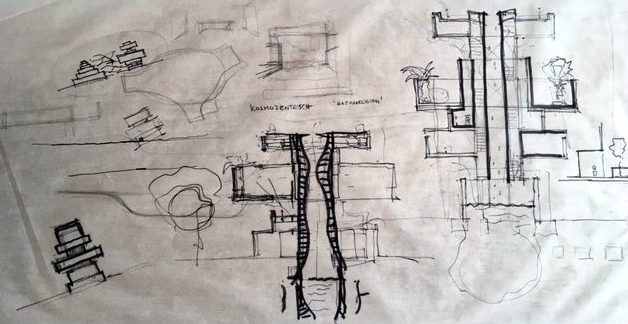
Mehr über XINATLI >> online


